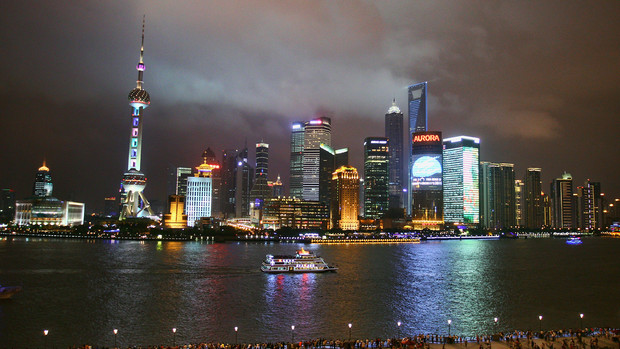China's problems with methamphetamine are growing

By Bloomberg View
In the summer of 2013, a 50-year-old chemistry professor in the Chinese province of Xi'an apparently decided to emulate "Breaking Bad." Teaming up with a Mr. Chen, Professor Lu (full names haven't been released) straddled between his classroom duties and a growing methamphetamine business -- at least until last week, when law enforcement swept down on the pair and their employees, seizing 128 kilograms of finished product, more than 2,000 liters of semi-finished product, and 5 million yuan in cash (approximately $806,000). As of a week ago, their sales network, which stretched across China, is no longer in operation.
Lu's was a short, spectacular run at one of China’s fastest growing business opportunities: the manufacture of methamphetamines and other synthetic drugs.
According to data released last week by China’s National Narcotics Control Commission, China was home in 2014 to 14 million drug addicts (a number that the agency acknowledges is a serious undercount). Of these, 2.955 million are registered with government agencies (for the purpose of treatment and monitoring by public agencies, including law enforcement), and more than half -- 1.459 million -- were recorded as users of methamphetamine. According to the government, the ranks of synthetic drug users are growing 36 percent every year.
Of course, China isn't the only country that has struggled to deal with a drug epidemic. But there are several reasons meth will likely prove to be an especially stubborn scourge for the Chinese government.
The first problem is easy supply. China is one of the world’s largest manufacturers of the chemical precursors necessary to make licit and illicit drugs. China tries to strictly control the distribution of these chemicals, but ambitious meth entrepreneurs can often find crooked chemical and pharmaceutical factories that are willing to evade regulations. Directly sourcing large volumes of ingredients allows meth producers to produce large batches and benefit from economies of scale.
In that way, it’s no accident that Guangdong Province, home to the bulk of China’s chemical industry, is also home to some of its biggest methamphetamine busts. In January 2014, for example, 3,000 paramilitary and police descended on a village of 14,000 devoted to meth production, where they shut down 77 meth labs, and seized more than 100 tons of meth-making ingredients.
China is also dealing with a complicated demand problem. Consider Guangdong, which has some of China’s highest rates of methamphetamine use. (That's according to an innovative 2014 study that measured illicit drug levels in the sewage of major Chinese cities and found meth "in every single sample analyzed.” The provincial government's data confirms the high rate.)
What differentiates Guangdong from other parts of China? Li Xiaodong, a member of the board of the China Association of Drug Abuse Prevention and Treatment, has suggested the province's high rates of drug use are linked to its high rates of migrant labor. (The area attracts tens of millions of laborersevery year from other parts of China.) Li recently told the South China Morning Post that more than 60 percent of Guangdong's drug users were originally from other provinces, and it's not hard to imagine why that group might find its way to drugs. Migrants often lead lonely lives -- many leave their families behind when they set off to find work -- and they're said to suffer from high rates of depression.
Studies suggest that migrant labor also takes a toll on the family members who are left behind. Studies have shown that China's biggest base of drug users is the country's poor rural youth. According to a 2011 report in the Global Times newspaper, 87 percent of rural Chinese drug users were under the age of 35, including many whose migrant laborer parents were no longer at home. (Meanwhile, a handful of studies and plenty of anecdotes suggest that drug use -- especially cheap drugs like meth -- are on the rise among working class Chinese more generally. In 2012, for example, a fatal truck crash caused by a meth-using driver inspired the national authorities to drug test truck drivers nationally and suspend more than 1,400.)
The government has made efforts to push back against these trends. Under President Xi Jinping, the Chinese government has undertaken a very public campaign against recreational drug use. In 2014, the Narcotics Control Commission claims that law enforcement “cracked” 146,000 drug-related cases, convicted 109,000 drug-related suspects, and seized 69 tons of “illegal substances.” And the government has also undertaken prosecuted celebrities, including the son of film star Jackie Chan, on drug charges.
But laudable as these efforts are, they don't address the root of China's methamphetamine problem. The country's growing demand and near endless supply for meth production means that, for the foreseeable future, there will likely be many more people vying to become the country's next Walter White.
Here we are to serve you with news right now. It does not cost much, but worth your attention.
Choose to support open, independent, quality journalism and subscribe on a monthly basis.
By subscribing to our online newspaper, you can have full digital access to all news, analysis, and much more.
You can also follow AzerNEWS on Twitter @AzerNewsAz or Facebook @AzerNewsNewspaper
Thank you!
